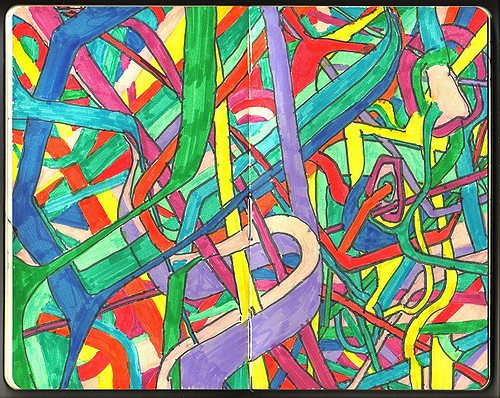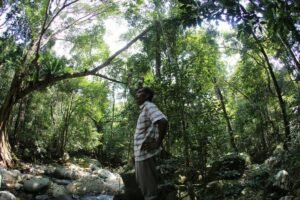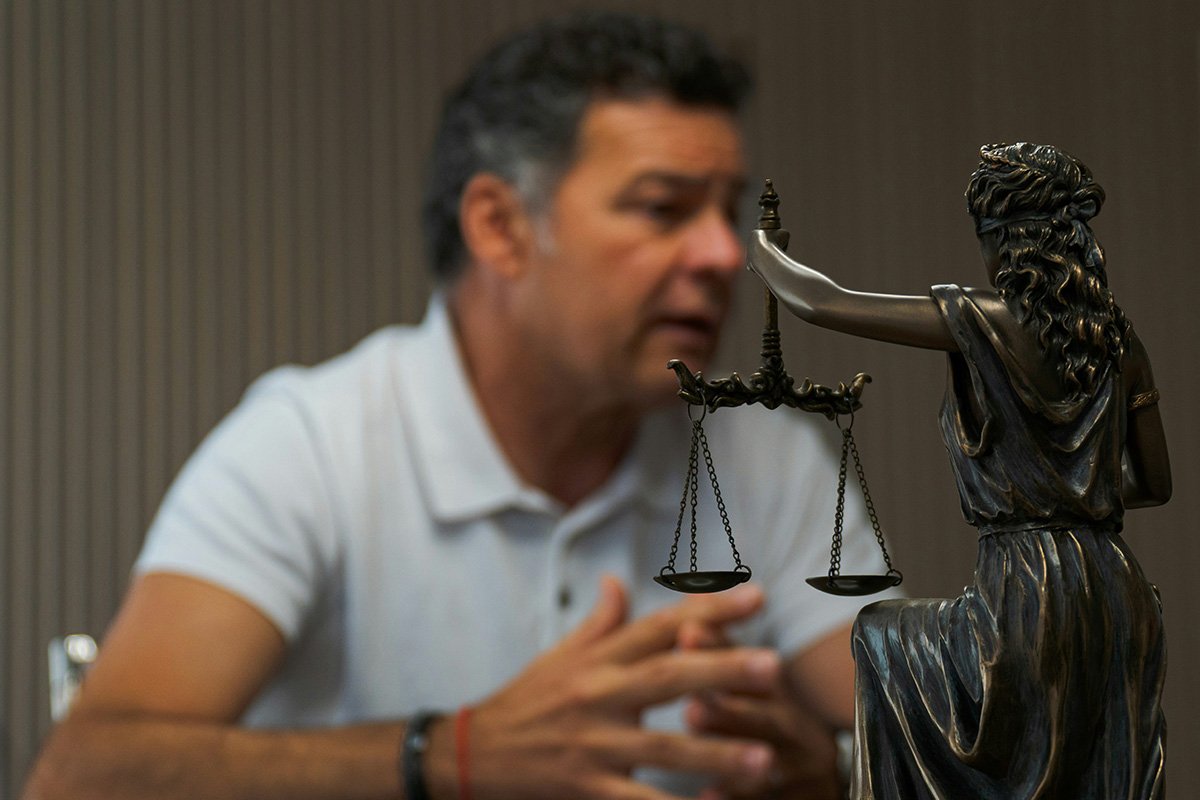
The Management Assistance Group (MAG) is one of NPQ’s go-to sources of information about social justice movements. MAG works with a number of the networks that are moving some of this nation’s most difficult issues. MAG has come to believe there are five elements that are critical to advancing a thriving justice ecosystem. This is the fourth in a special five-part series, in which MAG and NPQ invite you to contribute to the evolution of what these elements mean in practice. Let’s start something!
For many nonprofits, there is little new about trying to move the needle by seeing the big picture, understanding all the pieces, addressing root causes, or influencing institutions and structures. What is different about this moment in time—a time of sustained racism, xenophobia, police brutality, sexual violence, war, gender injustice, gun violence, Islamophobia, climate change, and more—is the immediate urgency and commitment to stretch the bounds of what is possible, to figure out how to fit together many parts so that the whole is greater than their sum, and to move from improving systems to disrupting and transforming systems.
The challenge is particularly urgent under the current administration. Traditional avenues such as legislation, administrative action, and even soon the courts are becoming obstacles to progressive change, particularly at the national level. Blockages and budget cuts at both the federal and state levels will trickle down to local communities. Pathways for transformation that do not embrace intersectionality, cross-movements, and equity will continue to be unsuccessful and will reinforce the current problems. And for all that is increasingly known, there is still significant uncertainty and unpredictability about the ripple effects and potential surprises. We run the risk of being distracted, diverted, stretched, and isolated in ways that seem to save one piece of the puzzle while sacrificing others.
Complex times require complex responses. Through our work in the field, we have seen a set of evolving practices that help leaders, organizations, and networks achieve the scale and depth of transformative change needed today. These practices are:
- Rethinking boundaries to address intersecting constituencies, issues, and geographies.
- Learning how to surf the waves of irrational and unpredictable developments.
- Drawing on multiple ways of knowing to surface, include, and transcend differences.
- Centering deep equity in all aspects of systems change.
- Developing an ecosystem of leaders who are systems thinkers and doers.
- Understanding that influencing complex systems is a marathon, not a sprint.
Rethinking Boundaries to Address Intersections
“You can achieve transactional change at the people level, but [that doesn’t] change the environment that creates the problem. If you want transformation, you need to go to systemic issues.”—Diane Bell-McKoy, Associated Black Charities
“People can get myopic and siloed. We can sometimes end up advocating for policies that have a negative impact; this isn’t to anyone’s benefit. In the last decade [for example], the number of incarcerated youth has been reduced by 50 percent. But if you look more deeply [from a systems perspective] you find that the rate of incarceration of kids of color has actually increased. It looks like a policy win [but it is not.]”—Sarah Bryer, National Juvenile Justice Network
The work we do often has unintended consequences—both good and bad—within and beyond the systems we work in. Issues are influenced by a myriad of interconnected and intersecting systems. As a result, practitioners are stepping back to see the larger web of issues, relationships, and events as well as the variations and nuances within it. In doing so, they are rethinking the boundaries of their work to encompass many related areas.
As May Boeve from 350.org explains, “[We] work on many facets of the problem [of climate change] at the same time, recognizing they are linked.” This includes influencing everything from science to corporate behavior to migration. It also includes connecting climate change to social justice and economic justice. Moreover, 350.org works at different levels of a system—from macro to micro. David Stember continues, “By definition [climate] is universal in scale, [but] we also have to think of the small scale and how to bring the pieces together.… Which parts of the system will we have the most impact on?” With expanded systems boundaries, 350.org can make strategic decisions about where and how they intervene and they can tailor their work to different national and local contexts while having a global impact.
The National Immigration Law Center [NILC] is also changing systems boundaries by bringing together healthcare professionals and immigrant rights advocates to look at how their systems can support each other. NILC has been working at the intersection of health and immigration since 1996. Since then, immigration has become a wedge issue for health care and vice versa. Immigrant-serving organizations have had to make a number of compromises in order to support the expansion of affordable and accessible health care. Additionally, recent efforts to reform immigration policy legalized groups of immigrants while excluding them from affordable health care. Simultaneously, health care organizations are struggling to serve people and close disparities in health outcomes for all populations.
According to NILC’s Health Policy Analyst, Jenny Rejeske, “We decided we needed to do something different because what we had been doing wasn’t working….[We recognized] the ways we were talking about the issues was contributing to a polarization of undeserving and deserving immigrants based on legal status.” As a result, NILC developed a new network of healthcare and immigration groups. Campaign consultant Crystal Plati explains,
I see this as a systems approach because…[we are] working across movements. The approach isn’t just policy [but also] about learning how to create readiness for change and be effective [even when we] don’t know what the opportunity will be.…
[We are also] building on progress at the state and local level.… If we could bring those together and connect the partners and share resources then we could create a drumbeat and build momentum toward policy change.
Influencing change in an irrational and unpredictable world
Birds rarely fly in a straight line to their destinations; they change course constantly in response to weather, food sources, other birds, and a host of different factors. Likewise, nonprofits may have clear visions for their communities and the planet, but they must be flexible and nimble in how they achieve results because the broader context is constantly changing. The nonprofits we know are building the capacity of their staff and partners to see patterns and surprises and adjust what they do, taking proactive and responsive steps towards their visions. Often, this means holding a stance of experimentation—that is, continuous learning with rapid feedback loops to understand what is happening and adjust and refine what they are doing. 350.org and the Kresge Foundation provide two examples of how nonprofits are doing this.
Samantha Bailey from 350.org explains, “[We are] getting better with holding messiness. This is essential with…systems because they are not neat and contained.” There are four elements of their approach that help them to influence change when things are unexpected, irrational, and unpredictable. First, as David Stember explains, there is a mindset among staff to engage in “messy problem-solving methods, thinking out loud, and collaborative decision-making where people can voice their concerns.” Second, these strategic conversations are informed by two-way communication and feedback loops between the staff and the ground. David notes, “Our job is to cultivate the relationships with local groups to make sure we hear from the right people at the right time.” Third, 350.org builds in slack so that staff can flex their time and budget resources when new information comes in and make decisions to shift their approach. Fourth, 350.org has a large, reliable volunteer base that allows it to scale up and down quickly.
The Kresge Foundation is reshaping its grantmaking to take on complex systems change in Detroit, including in the area of early childhood systems. Wendy Jackson, managing director of Kresge’s Detroit Program, explains, “In past efforts, when Kresge and others have just jumped right in, the [initiatives] didn’t have staying power. It is like quicksand; you are overwhelmed by the complexity, the players, and the politics.… [Now, we] start with how to set up the leadership table.” The leadership table is a group of diverse advisors who support the Foundation in continuously adapting to emerging, irrational, or unpredictable changes. With the support of the leadership table, staff consider different scenarios for what these early childhood systems might look like in the future, anticipate how the Foundation and their grantees might respond to these scenarios, and reflect on how to make adjustments before they engage deeply. The table then provides the space to continuously test and learn how to influence early childhood systems.
Drawing on multiple ways of knowing to surface, include, and transcend differences
“One powerful thing for me is to listen to the community and what matters to them and prove it using data or other methods.… There’s a beautiful story about meaning making [with] different communities, different systems coming together to change things.”—Ashley Shelton, The Power Coalition, Louisiana
“You want to have a data-driven process and be informed…and you need the nuances to know if you are going in the right direction. Our work is place-based and we put more emphasis on community wisdom and the engagement required to hear input, seek lessons, and understand what is required for community change from people living and doing the work.”—Wendy Jackson, The Kresge Foundation
“As we’ve created space for multiple levels of engagement and sharing around stories, experiences, wants, and needs, a more textured reality begins to emerge. We find that we have different definitions, perspectives, and ways of engaging with this type of movement building depending on our local culture and other dynamics. Some of the value of this is simply beginning to understand these differences and not attempt to erase them, but to instead let them guide our collective effort to improve this work.”—Samantha Bailey, 350.org
From MAG’s observation, influencing complex systems requires deep attention to process. The process of meaning-making is just as important as “doing the work” because it often shifts what the work looks like, and, in fact, sometimes actually becomes the work. Leaders of complex systems change draw on multiple ways of knowing to help people see dynamic relationships, lift up voices that open people up to trying different things, and reconcile tensions without making forced choices.
See Dynamic Relationships
Carla de Paz at East LA Community Corporation (ELACC) surfaces system dynamics with community residents by tapping artistic, experiential, indigenous/ancestral, spiritual, and nature-based ways of knowing. Through ELACC’s Building Healthy Communities Initiative, community members are gathering cross-generational stories and writing a comic book that shares how their community has evolved over time. This history will reveal a larger system of land use policies, migration patterns, and other factors and will create a narrative grounded in community experience. As another example, ELACC conducts Point-of-View Tours for community members to visit each other in different neighborhoods. They hear the stories of each other’s struggles, personally experience each other’s community contexts, and learn about the differences and similarities among communities. Carla says this “has been helpful in creating knowledge that goes beyond [a particularly neighborhood] and helps our members see [their work within] a movement for affordable housing and transit justice.”
Lift Up Voices and Open People to Trying Different Things
ELACC also uses meaning making processes to shift the balance of power towards those most harmed by the system’s status quo. Carla analyzes demographic, policy, and other forms of traditional data and metrics to identify who should be centered in ELACC’s organizing work. She brings this data coupled with community members directly telling their stories to decision-makers. This creates space for decision-makers to value unrecognized truths and to make different choices as a result. As she says, “stories are equal to the data and should be used in tandem. It has a completely different impact to hear a mom [tell] her story as opposed to hearing a bunch of data points. It is harder for people at a hearing…to push back.”
350.org has also used meaning-making processes to surface and embrace a range of perspectives in ways that shift people’s willingness to do things differently. Samantha Bailey shares one example:
We’re slowly establishing more transparency about core information [at 350.org] and [in one instance] I went about this from a data analysis mode. I wrote up the organization’s budget on a massive sheet of paper with the breakdown of [how] different teams have been allocated over the past few years. We conducted a session [to share this] where staff could question the leadership on the budget. At the same time, a group of staff form the Global South asked for time on the agenda […] They selected a few people working in very different contexts to share their stories of what their work looks like, how they build relationships, etc.… The stories really moved people. I’ve seen definite shifts since the retreat in the willingness of people to participate in cross-organizational processes as well as consider the rest of the organization in their planning for the next fiscal year. I certainly have been inspired to think of more ways we can make space for different ways of knowing in other areas of our work.
Reconcile Tensions
Finally, drawing on multiple ways of knowing can help people to hold tensions, polarities, and contradictions, which is critical to influencing complex systems. ELACC and the Los Angeles Metropolitan Transportation Authority (Metro) experienced this recently around transit-oriented development in Boyle Heights, a community experiencing rapid gentrification. “The number one thing our members wanted was affordable housing on these lots [owned by Metro],” explains ELACC’s Carla de Paz. But Metro and ELACC faced systemic constraints in building and renting such housing.
Community means different things to different people. We’ve struggled with Metro as an agency and how they do their outreach. […] The low-income renters who depend on the transit system for day-to-day necessities—for us, that population is the most impacted and left out of any process. After a significant amount of organizing, mobilization, and community pressure, we’ve seen Metro staff be more intentional and make sure that this population is also included. They have created spaces for tenants to speak.
Together, Metro and ELACC worked to understand the community’s needs, eligibility of community residents for affordable housing programs, financing, and other influencing factors. They also provided community trainings to residents to understand the system and overcome fears. Carla said,
Sign up for our free newsletters
Subscribe to NPQ's newsletters to have our top stories delivered directly to your inbox.
By signing up, you agree to our privacy policy and terms of use, and to receive messages from NPQ and our partners.
[Our members] needed to understand the complexity of the affordable housing program: where the money comes from, how complicated it is to apply, why it doesn’t provide housing for everyone, and who is left out. [They also needed to understand that] we can’t make housing restricted to those in Boyle Heights.… We talked about it as an issue in LA County and the entire country… Being able to understand the contradictions [that the public agency serves the public good and requires a fair return—or that affordable housing is available for all while it is still not enough for community residents] gives them the most power to be able to make smart decisions.
After these processes, there is now more trust between ELACC and Metro and they have been able to negotiate what is and is not possible.
Centering deep equity in all aspects of systems change
“If you bring a systems approach to community change and do not address racial inequities, you’ve immediately diminished your impact and most likely replicated the tragedy of leaving the most vulnerable behind. Our social structures and policies disproportionately impact poor people and people of color. Consequently, leaders must undertake systems work with a consciousness and commitment to race and a host of other intersectional identities.” Michael McAfee, PolicyLink
“There is something about using a systems approach that centers equity by saying everything is interdependent, we all depend on each other, and we need to build a world that does this.”—May Boeve, 350.org
“When we first started the relief process and moving into recovery [after Katrina and the levee break], we often talked about equity and could not get traction. The leaders that have stayed in this work…have redefined equity; it is not negative anymore. […] It is actually a word that prominently gets spoken about in programming and funding in a systems kind of way.”—Ashley Shelton, The Power Coalition, Louisiana
One of the co-authors, Ashley Shelton, has been engaged in New Orleans recovery since Hurricane Katrina and the levee break in 2005. That recovery process did not inherently put equity at its center. It is her perspective that “[the] state programs were created to put federal funds on the ground. There were meetings to talk to the community and inform them, but they were doing it in a 9-to-5 way. […] They started to do evening meetings to meet the diverse needs in African American communities and so many others where community felt that their voices were not being heard. […] They were trying to check boxes and get things done without thinking about how a community would have real input and see that input reflected in planning documents that directly affected their homes and community.”
Furthermore, she notes, “As programs were built and dollars given to agencies, for us, equity was about trying to put an emphasis on justice and fairness.” For example, after people were displaced for months, the first communication they received was planning maps created by the Bring New Orleans Back Commission. “The Lower Ninth Ward? People saw it coming [back on the map] as a park. We said, a small handful of people don’t get to decide how the city returns. We created voice and pressure. […] This is where equity made a difference.” New maps were developed with more equitable outcomes for community residents by including them in the process. The voice and pressure created are still informing the comprehensive zoning process more than ten years later.
Centering equity means recognizing the people who are most affected as knowledge bearers and co-creators of systems solutions as well as being explicit about your equity lens. May Boeve of 350.org points out the importance of being explicit as well.
I thought we always had an equity lens, but by not being explicit and clear about a racial justice lens until recently, it didn’t manifest that way and it wasn’t how people on the margins of the organization experienced it.
Centering equity also redefines what success is and what should be done to influence complex systems. Jenny Rejeske of NILC explains, “Healthcare folks talk about equity and disparities, but tend to compare health outcomes of people who obtain health care. Yet many immigrants still cannot get in the door [and don’t have access to care]. The conversation about health equity needs to be broader and include all immigrants in our communities—including those who are legally barred from health coverage.” Crystal Plati further notes that the coalition could decide that it will be “done when there is immigrant inclusion in health care, but it doesn’t end there. Equity is about high quality care for all.”
Carla at ELACC agrees that equity is integral to complex systems change. People need to understand and address how power and privilege play out both historically and today. “East L.A. has a long history of experiencing inequity and injustice around land use (e.g., redlining, multiple freeways having environmental impacts, etc.). […] There needs to be a comprehensive plan that takes into consideration displacement and mitigates that impact.”
Developing an ecosystem of leaders who are systems thinkers and doers
“There are folks in the trenches doing the work. There are folks who can interpret and innovate.…and there is a way to support people connecting their own dots and achieving unique approaches.”—Ashley Shelton, The Power Coalition, Louisiana
For solutions to last and to have staying power, it requires more than engagement. It requires communities being able to develop and define their own solutions and processes.—Wendy Jackson, The Kresge Foundation
Many people are working in networked ways across organizations and issue areas with the understanding that we can’t influence complex systems in silos. We see an emerging practice of developing a broader ecosystem of leaders who are systems thinkers and doers. This means that people who are directly affected beyond formal executive leaders are learning about complex systems and different ways to influence them. They analyze systems, co-create solutions, implement these solutions, and reflect and adapt their approaches together.
The story told earlier of ELACC working with Metro on affordable housing is a clear example of developing resident leaders to analyze systems and co-create solutions together. Another example involves the Detroit Blight Removal Task Force convened by the Obama administration in 2013. According to Wendy Jackson, “This is an example of where the technical data and community wisdom converged to yield tremendous impact.” Data Driven Detroit and Loveland Technologies created the Motor City mapping project to help the task force develop a plan for blight elimination. One hundred and fifty residents were trained to capture images of 380,000 parcels and conduct a survey of their condition. Because community residents were engaged, it lifted up different challenges such as environmental concerns and places to preserve. “I don’t know if we would have gotten this nuance if we hadn’t had the convergence,” stated Jackson.
The Kresge Foundation, along with the Ford Foundation and Skillman Foundation, then supported efforts to develop community members as leaders who were systems thinkers as well as doers. The participants were already “natural leaders with a track record of mobilization. […] The primary tool to do this was the Blight Boot Camps, [which] brought leaders together for training, knowledge sharing, and systems building.” They began to tackle blight block-by-block and neighborhood-by-neighborhood. Now, there are new networks that didn’t exist before that are tackling city policy and, to some extent, state policy. This was an evolution from previous project- and outcome-focused investments to investments in a leaderful ecosystem and a networked approach to systems change.
There is great opportunity for nonprofits to do more to build a leaderful ecosystem of system thinkers and doers. Many systems changers still hold the systems knowledge and decision-making within their positional authority. They may use community knowledge to inform their decisions, but they have not moved to share the leadership or create networks across the system(s). Engaging many people in co-creating and implementing decisions to influence systems is essential to prolonged change. We can no longer put it aside in favor of siloed campaign work that strictly advances policy goals.
Understanding that Influencing Complex Systems Is a Marathon, Not a Sprint
Influencing complex systems is not easy. It exposes people to trauma, conflict, and ambiguity and it requires patience and persistence over long periods of time. This is especially important given our current political context, where traditional policy victories will be fewer and a long view for advancing the kinds of change we want to see is required. The people we spoke with are mindful of how they do this work so they can stay fully present without burning out.
As our Louisiana-based co-author shares, “The work is intense—fighting for justice and equity in a chaotic space. That first five years after Katrina, I went nonstop.… [It wasn’t just Katrina, but several hurricanes over years, helping] coastal families and fisherman to rebuild…and be made whole after a disaster. We were proud of this work…then the BP oil spill took it away. This was the moment that I knew I had to do something different. I started to recognize that it had taken a toll on me. I could no longer live in a disaster paradigm and had to shift my focus to system change work grounded in community. A friend told me, ‘It is a marathon, not a sprint. You alone are mighty and powerful, but you alone won’t solve this.’”
She made several changes, and reflects, “I know my limits now and am cautious of behaviors that push me to give 110 percent while forgetting about other aspects of my life.… I know my highest use and purpose in this work.” To that end, she is working with communities on the ground to influence complex systems by building a pathway to power for Louisiana’s citizens. This gives her energy and joy.
Carla de Paz notes how ELACC recognizes and holds trauma and conflict with members:
With our members, we explore identity and that is where things come up: trauma that people have experienced as women, low-income, transit riders, tenants, and immigrants. We share stories and people are able to bond and create unity and strength. It no longer feels like we are alone. We have the power to change things.… We dig into the feelings and that helps us be better prepared when someone attacks you. We understand that they aren’t doing this personally but reacting to a larger system, too.
Jenny Rejeske at NILC adds, “We need to redefine winning.… We want to lift up anything that takes a step forward and promotes access to healthcare.… These small victories—a coalition formed, a policy changed, etc.—we want to lift up those stories” to build morale and momentum across the network.
Recognizing small victories and advances while holding the longer vision is a useful way to maintain the energy and capacity to do this systems change work. Also, bringing your whole self to the work and the full scope of your capacities, needs, and desires is essential for holding the whole and the vastness of it while not burning out. What we have found—through our work with clients and partners, but also through our own experience doing the work—is that keeping joy, love, and your spirit at the center is not only essential to doing the work, it is the work of systems change.
We hope you’re enjoying this series, “Five Elements of a Thriving Justice Ecosystem,” which began with “Pursuing Deep Equity” and led to “Cultivating Leaderful Ecosystems” and “Multiple Ways of Knowing.” Look for the conclusion, on creating the space for inner work, next week.











